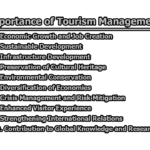The Impact of Internal Communication on Employee Engagement in Remote Work Environments:
In recent years, the global workforce has witnessed a transformative shift in the way we work. The advent of technology and the ongoing pandemic have accelerated the adoption of remote work, transforming it from a trend to a fundamental aspect of contemporary work culture. While the benefits of remote work are evident in terms of flexibility and work-life balance, organizations now grapple with the challenge of maintaining high levels of employee engagement in virtual environments. In this article we will explore the impact of internal communication on employee engagement in remote work environments.
Section 1: The Foundation of Employee Engagement:
To comprehend the impact of internal communication on employee engagement in remote work environments, it is crucial to understand the foundational elements of engagement itself. Employee engagement goes beyond mere job satisfaction; it encapsulates the emotional commitment an employee has towards their organization’s goals and values. Factors such as clear communication, a sense of purpose, and strong interpersonal relationships contribute significantly to fostering engagement among employees. In the context of remote work, these elements take on a new dimension, necessitating a reevaluation of communication strategies.
Section 2: Challenges of Remote Work Environments:
The widespread adoption of remote work has brought about transformative changes in how organizations operate, presenting a paradigm shift in the traditional workplace dynamic. While remote work offers numerous advantages, such as flexibility and increased work-life balance, it is not without its challenges. Understanding and addressing these challenges is crucial for organizations seeking to optimize the remote work experience and maintain high levels of productivity and employee well-being.
2.1 Isolation and Loneliness: One of the most prevalent challenges in remote work environments is the sense of isolation and loneliness that employees may experience. The lack of physical presence and face-to-face interactions can lead to feelings of disconnect from the team and the broader organizational culture. This isolation can impact motivation, collaboration, and overall job satisfaction.
To address this challenge, organizations must actively foster a sense of community through virtual team-building activities, regular check-ins, and opportunities for social interaction. Creating virtual spaces for casual conversations and non-work-related interactions helps mitigate the isolation that remote workers may feel.
2.2 Communication Barriers: Effective communication is fundamental to the success of any organization, and remote work introduces unique communication challenges. The absence of in-person communication can lead to misunderstandings, misinterpretations, and a potential breakdown in team dynamics. Non-verbal cues, crucial for understanding context, may be lost in virtual interactions.
Organizations must invest in robust communication tools and establish clear communication protocols. Regular virtual meetings, the use of video conferencing, and synchronous communication platforms can help bridge the communication gap. Additionally, fostering a culture of openness and encouraging transparent communication is vital in overcoming barriers and ensuring that information flows seamlessly within remote teams.
2.3 Work-Life Balance: While remote work offers the advantage of flexibility, it also blurs the boundaries between work and personal life. The absence of a physical separation between the office and home can lead to overworking, burnout, and increased stress levels. Employees may find it challenging to establish clear boundaries, resulting in an “always-on” mentality.
Organizations should actively promote and support a healthy work-life balance. Encouraging employees to set clear working hours, take regular breaks, and establish a dedicated workspace helps create a distinction between work and personal life. Setting realistic expectations regarding workload and deadlines also contributes to a healthier work-life balance for remote employees.
2.4 Technology Challenges: Reliance on technology is inherent in remote work, and technological challenges can hinder productivity. Issues such as poor internet connectivity, inadequate hardware, or difficulties in navigating collaboration platforms can disrupt workflow and contribute to frustration among remote workers.
Organizations must provide the necessary technological infrastructure and support to ensure a seamless remote work experience. This includes offering training on collaboration tools, providing technical assistance, and regularly assessing and upgrading technology resources. Addressing technology challenges proactively is essential for preventing disruptions and maintaining productivity.
2.5 Team Collaboration and Coordination: Collaborative projects and effective teamwork are often more challenging in remote work environments. Coordinating efforts, sharing information, and maintaining a cohesive team dynamic require intentional efforts in the absence of physical proximity. Differences in time zones and working hours can further complicate coordination.
Organizations should implement project management tools, establish clear workflows, and foster a collaborative mindset among team members. Regular team meetings, both for work and social purposes, contribute to building a sense of camaraderie and ensure that everyone remains aligned on goals and priorities.
2.6 Employee Engagement and Motivation: Sustaining high levels of employee engagement and motivation in a remote setting poses a notable challenge. The lack of face-to-face interactions, recognition, and a shared physical workspace can impact morale and job satisfaction.
Organizations must prioritize employee engagement through intentional communication, recognition programs, and opportunities for professional development. Regular feedback sessions, virtual team-building activities, and initiatives that highlight individual and team accomplishments contribute to maintaining a motivated and engaged remote workforce.
2.7 Security Concerns: Remote work introduces additional security challenges, particularly in terms of data protection and cybersecurity. Employees working from various locations may use different networks, potentially exposing sensitive information to security threats. Ensuring the security of digital communication and data becomes paramount.
Organizations must implement robust cybersecurity measures, including secure virtual private network (VPN) connections, encryption protocols, and regular security training for remote employees. Establishing clear security policies and guidelines helps mitigate the risks associated with remote work.
2.8 Cultural and Diversity Challenges: Maintaining a strong organizational culture and fostering diversity and inclusion can be challenging in remote work environments. Communication gaps, differences in time zones, and limited opportunities for informal interactions may contribute to a sense of disconnection among team members.
Organizations should actively promote inclusivity through virtual diversity and inclusion initiatives, cultural awareness training, and efforts to create a sense of belonging among remote employees. Encouraging cross-cultural collaboration and celebrating diverse perspectives contribute to a more inclusive remote work culture.
The impact of internal communication on employee engagement in remote work environments.
Section 3: The Role of Internal Communication in Remote Engagement:
The role of internal communication in remote engagement is pivotal for organizations aiming to foster a connected, motivated, and productive workforce in virtual work environments. Effective internal communication becomes the bridge that spans the geographical distances and mitigates the challenges inherent in remote work settings. Understanding and implementing strategic communication practices is essential to creating an environment where employees feel engaged, informed, and aligned with the organization’s goals.
3.1 Clear and Transparent Communication: Clear and transparent communication serves as the foundation of remote engagement. In the absence of physical proximity, remote employees rely heavily on digital communication channels. Organizations must establish open lines of communication through various platforms, such as video conferencing, instant messaging, and collaboration tools.
Transparent communication includes providing regular updates on organizational developments, changes in policies, and relevant information. Clear expectations regarding tasks and projects should be communicated, ensuring that remote employees have a comprehensive understanding of their roles and responsibilities. Transparent communication builds trust, a critical element in fostering engagement.
3.2 Establishing a Sense of Purpose: Remote employees often struggle with a diminished sense of connection to the broader goals and mission of the organization. Internal communication plays a crucial role in articulating and reinforcing the company’s purpose, vision, and values. Leaders should communicate the impact of individual contributions on the larger organizational objectives, helping remote employees understand the significance of their work.
Regularly communicating the organization’s mission and values through various channels, including virtual town halls, newsletters, and personalized messages, contributes to instilling a sense of purpose among remote employees. Employees who understand and align with the organization’s purpose are more likely to be engaged and committed to their work.
3.3 Building Virtual Communities: The absence of physical offices can lead to a lack of social interaction and camaraderie among remote employees. Internal communication strategies should actively facilitate the creation of virtual communities. This includes both professional and social interactions.
Virtual team-building activities, online forums, and informal virtual coffee breaks can serve as platforms for remote employees to connect on a personal level. Internal communication tools can be leveraged to establish dedicated channels for non-work-related conversations, fostering a sense of belonging and community among team members.
3.4 Feedback and Recognition: Remote employees may feel detached from traditional feedback and recognition mechanisms prevalent in physical office spaces. Internal communication strategies should incorporate regular feedback sessions, performance evaluations, and public recognition of achievements.
Providing constructive feedback on a timely basis helps remote employees understand their strengths and areas for improvement. Publicly acknowledging individual and team accomplishments through virtual channels, such as company-wide emails or recognition platforms, contributes to a positive and motivating work environment.
3.5 Technological Enablers: Leveraging advanced communication technologies is essential for effective internal communication in remote work environments. Collaboration platforms, such as Slack, Microsoft Teams, and Zoom, facilitate real-time communication, file sharing, and seamless collaboration.
Additionally, organizations can explore the integration of artificial intelligence (AI) in internal communication. AI-powered chatbots can provide instant responses to queries, automate routine communication tasks, and analyze employee sentiment. These technological enablers contribute to a more responsive and adaptive internal communication ecosystem.
3.6 Proactive Change Management: Implementing changes in communication strategies or introducing new tools in a remote work setting may face resistance from employees accustomed to traditional modes of communication. Proactive change management is crucial to ensure a smooth transition.
Organizations should offer training and support to employees to familiarize them with new communication tools and methods. Communicating the benefits of these changes and addressing concerns helps in overcoming resistance and fostering a positive attitude towards evolving communication practices.
3.7 Inclusive Communication: Inclusive communication is vital for remote engagement, considering the diverse nature of virtual teams. Organizations should be mindful of different time zones, cultural nuances, and language variations within their remote workforce.
Internal communication should be designed to accommodate these differences, ensuring that information is accessible and relevant to all employees. Providing multilingual support, scheduling meetings at convenient times for different regions, and encouraging diverse perspectives in communication contribute to an inclusive communication approach.
Section 4: Technological Enablers of Effective Internal Communication:
Technological enablers play a crucial role in shaping the landscape of internal communication within organizations, particularly in the context of remote work environments. As businesses continue to embrace digital transformation, leveraging advanced communication technologies becomes essential for fostering efficient, seamless, and inclusive communication among teams. Below, we explore the technological enablers that contribute to effective internal communication:
4.1 Collaboration Platforms: Collaboration platforms serve as central hubs for internal communication, providing a unified space for teams to interact, share information, and collaborate on projects. Examples of such platforms include Slack, Microsoft Teams, and Asana. These tools facilitate real-time messaging, file sharing, and project management, allowing remote teams to stay connected and work collaboratively regardless of geographical distances.
Features like channels, direct messaging, and integration with other business applications enhance communication efficiency. Collaboration platforms not only streamline communication but also contribute to better organization and accessibility of information, fostering a more collaborative and productive remote work environment.
4.2 Video Conferencing Tools: Video conferencing tools, such as Zoom, Microsoft Teams, and Google Meet, have become integral components of remote communication strategies. These tools go beyond traditional text-based communication, enabling face-to-face interactions even in virtual settings. Video conferencing is essential for team meetings, presentations, and virtual town halls, providing a more personal and engaging communication experience.
Features like screen sharing, breakout rooms, and recording capabilities enhance the versatility of video conferencing tools. They bridge the gap between remote employees, facilitating effective communication, and helping to build stronger connections within the team.
4.3 Internal Communication Apps: Internal communication apps are designed specifically to streamline communication within organizations. Platforms like Slack, Microsoft Teams, and Workplace by Facebook offer dedicated spaces for team discussions, announcements, and the sharing of updates. These apps often include features such as channels, direct messaging, and the ability to integrate with other business applications.
Internal communication apps help consolidate communication channels, reducing the need for multiple tools and minimizing information silos. This results in a more cohesive and organized communication structure, especially important for remote teams that rely heavily on digital communication.
4.4 Artificial Intelligence (AI) in Communication: The integration of artificial intelligence (AI) in internal communication is an emerging trend that holds significant potential. AI-powered chatbots, for instance, can provide instant responses to common queries, automate routine communication tasks, and assist employees in finding information quickly. This not only enhances the efficiency of communication but also frees up human resources for more complex tasks.
AI can also be used for sentiment analysis, helping organizations gauge the mood and engagement levels of their remote workforce. By analyzing communication patterns and feedback, AI can provide valuable insights that organizations can use to tailor their communication strategies and address potential issues proactively.
4.5 Intranet Platforms: Intranet platforms serve as digital hubs for internal communication, information sharing, and collaboration. They provide a centralized location where employees can access company news, policies, and important documents. Examples include SharePoint, Jive, and Confluence.
Intranet platforms contribute to a cohesive organizational culture by offering a shared space for information dissemination. Remote employees can easily access resources, stay updated on company news, and engage in discussions through these platforms, fostering a sense of connection to the larger organization.
4.6 Mobile Apps for Internal Communication: With the increasing reliance on mobile devices, organizations are leveraging mobile apps for internal communication. Mobile apps offer flexibility and convenience, allowing employees to stay connected and access information on the go. Many collaboration and communication platforms, such as Slack and Microsoft Teams, provide dedicated mobile apps.
Mobile apps support real-time communication, push notifications, and access to essential documents, ensuring that remote employees can stay connected even when not at their desks. This accessibility enhances the responsiveness of internal communication in dynamic remote work environments.
4.7 Enterprise Social Networking: Enterprise social networking platforms, such as Yammer and Chatter, bring a social media-like experience to internal communication. These platforms enable employees to share updates, ideas, and collaborate in a more informal and social manner. Features like newsfeeds, likes, and comments contribute to a sense of community within the organization.
In remote work environments, where informal interactions are limited, enterprise social networking platforms play a crucial role in fostering a virtual sense of camaraderie. They provide a space for employees to share achievements, celebrate successes, and engage in non-work-related conversations, contributing to a positive and inclusive remote work culture.
4.8 Integrated Communication Suites: Integrated communication suites bring together various communication tools under a unified platform. Examples include Microsoft 365, Google Workspace, and Cisco Webex. These suites offer a comprehensive set of communication and collaboration tools, including email, messaging, video conferencing, and document sharing.
Integrated communication suites provide a seamless user experience by centralizing communication tools within a cohesive ecosystem. This integration streamlines workflows, reduces the need for switching between multiple applications, and enhances overall communication efficiency in remote work environments.
The impact of internal communication on employee engagement in remote work environments.
Section 5: Overcoming Resistance to Change:
Overcoming resistance to change is a critical aspect of successful organizational transformations, particularly in the context of introducing new technologies, workflows, or structures. Change is inherent in the evolution of businesses, and the ability to navigate resistance is crucial for ensuring a smooth transition and maximizing the benefits of change initiatives. Below is an exploration of strategies and approaches to overcome resistance to change:
5.1 Effective Communication: Communication is the cornerstone of overcoming resistance to change. Leaders must communicate the need for change clearly, emphasizing the reasons, benefits, and expected outcomes. Transparent communication helps employees understand the purpose behind the change and aligns their efforts with the broader organizational goals.
Communication should be a two-way process, allowing employees to express their concerns and providing opportunities for feedback. Addressing questions and uncertainties demonstrates empathy and helps build trust, mitigating resistance rooted in fear of the unknown.
5.2 Participation and Involvement: Involving employees in the change process fosters a sense of ownership and reduces resistance. Actively seek input from those directly affected by the change, encouraging them to contribute ideas and suggestions. This not only enhances the quality of the change initiative but also makes employees feel valued and heard.
Workshops, focus groups, and collaborative problem-solving sessions can be effective in involving employees. When people see that their opinions matter and that they have a role in shaping the change, they are more likely to embrace it positively.
5.3 Leadership Support: Strong leadership support is instrumental in overcoming resistance. Leaders must demonstrate a commitment to the change, both in words and actions. When employees see leaders actively championing the change, it sends a powerful message about the organization’s direction and the importance of the initiative.
Leaders should visibly engage in the change process, provide resources and support, and serve as role models for embracing the new ways of working. Their commitment sets the tone for the entire organization and encourages employees to follow suit.
5.4 Education and Training: Resistance often stems from a lack of understanding or fear of incompetence with the new processes or technologies. Providing comprehensive education and training programs is essential for equipping employees with the skills and knowledge needed to navigate the changes successfully.
Training sessions, workshops, and accessible learning resources should be tailored to address specific concerns and build confidence among employees. Offering ongoing support during the implementation phase helps reinforce the learning and ensures a smoother transition.
5.5 Creating a Positive Narrative: Framing the change in a positive light can influence perceptions and attitudes. Instead of focusing solely on the problems with the current state, emphasize the opportunities and benefits that the change will bring. Craft a compelling narrative that inspires and motivates employees to see the change as a positive and necessary evolution.
Highlight success stories and showcase how the change aligns with the organization’s values and long-term vision. A positive narrative fosters a sense of optimism and encourages employees to view the change as a step toward progress and growth.
5.6 Building a Coalition of Supporters: Identify and cultivate a coalition of change champions within the organization. These individuals, who can be from different levels and departments, act as advocates for the change. Their role is to disseminate information, address concerns, and encourage their peers to embrace the change.
A diverse coalition helps create a network of support across the organization, making it easier to influence and overcome pockets of resistance. These champions can share their positive experiences and insights, making the change more relatable to their colleagues.
5.7 Addressing Emotional Concerns: Resistance to change is often rooted in emotional factors such as fear, uncertainty, and a sense of loss. Acknowledge and address these emotional concerns by providing a platform for open discussions. Allow employees to express their emotions, validate their feelings, and demonstrate empathy.
Communicate the benefits of the change in terms of personal and professional growth. Emphasize how the organization values its employees and is committed to supporting them through the transition. This human-centered approach helps build trust and minimizes emotional barriers to change.
5.8 Celebrating Milestones and Successes: Celebrating small victories and milestones during the change process is essential for boosting morale and reinforcing a positive outlook. Recognize and appreciate the efforts of individuals and teams who contribute to the success of the change initiative. This not only creates a sense of achievement but also reinforces the idea that progress is being made.
Regularly communicate the positive outcomes and impact of the changes, reinforcing the connection between individual contributions and the overall success of the organization. Celebrations act as powerful motivators and counteract negativity associated with resistance.
5.9 Feedback Loops and Continuous Improvement: Establishing feedback mechanisms ensures ongoing dialogue and enables the organization to adapt based on the input received. Create channels for employees to provide feedback, share concerns, and suggest improvements throughout the change process. This demonstrates a commitment to continuous improvement and a willingness to address evolving needs.
Regularly evaluate the effectiveness of the change initiative, making adjustments as necessary. A dynamic and responsive approach reinforces the organization’s commitment to refining the change for the benefit of its employees.
5.10 Patience and Persistence: Change is a gradual process, and overcoming resistance requires patience and persistence. Recognize that individuals may adapt to change at different rates. Continuous communication, support, and reinforcement are crucial elements in maintaining momentum and sustaining positive attitudes over time.
Leaders and change agents should be prepared for setbacks and challenges. Persistence in addressing concerns, staying responsive to feedback, and maintaining a long-term perspective contribute to the ultimate success of the change initiative.
In conclusion, the impact of internal communication on employee engagement in remote work environments cannot be overstated. As organizations navigate the dynamic landscape of virtual work, a strategic and thoughtful approach to internal communication is imperative. By addressing the unique challenges posed by remote work and leveraging advanced communication technologies, organizations can create an environment where employees feel connected, valued, and engaged. As we continue to embrace the era of remote work, prioritizing internal communication will be pivotal in nurturing a workforce that thrives in the virtual sphere.
Frequently Asked Questions (FAQs):
What is internal communication in the context of remote work environments?
Internal communication in remote work environments refers to the exchange of information, ideas, and messages within an organization, particularly when employees are geographically dispersed. It involves the use of various communication channels to keep employees informed, engaged, and connected in a virtual setting.
Why is internal communication crucial for employee engagement in remote work?
Internal communication is crucial for employee engagement in remote work as it helps bridge the physical distance between team members. Clear and effective communication fosters a sense of connection, alignment with organizational goals, and a positive work culture. It ensures that remote employees feel informed, valued, and engaged in their roles.
How can organizations improve internal communication in remote work settings?
Organizations can improve internal communication in remote work settings by leveraging digital communication tools, establishing clear communication protocols, fostering transparent leadership, encouraging regular feedback, creating virtual communities, and providing training on effective remote communication. Strategies should address the unique challenges of remote work, such as isolation and reliance on technology.
What role does leadership play in internal communication for remote engagement?
Leadership plays a critical role in internal communication for remote engagement. Leaders need to communicate a clear vision, mission, and organizational goals. They should actively engage with remote teams, provide regular updates, and demonstrate transparency. Strong leadership support reinforces a sense of purpose and direction, contributing to higher employee engagement.
How does internal communication impact employee well-being in remote work?
Effective internal communication positively impacts employee well-being in remote work by reducing feelings of isolation, providing clear expectations, and fostering a supportive work culture. Open communication channels allow employees to express concerns, receive feedback, and stay connected, contributing to a healthier work environment.
What challenges does internal communication face in remote work environments?
Challenges in internal communication in remote work environments include potential communication barriers, the absence of face-to-face interactions, difficulties in conveying non-verbal cues, and the need to navigate diverse time zones. Overcoming these challenges requires strategic planning, the use of appropriate communication tools, and a proactive approach from organizations.
How can organizations measure the effectiveness of internal communication in remote work?
Organizations can measure the effectiveness of internal communication in remote work through employee surveys, feedback sessions, and key performance indicators (KPIs) related to communication platforms. Metrics such as engagement levels, response rates to communications, and the clarity of organizational goals can provide insights into the success of internal communication strategies.
What role does technology play in enhancing internal communication in remote work environments?
Technology plays a crucial role in enhancing internal communication in remote work environments. Collaboration platforms, video conferencing tools, chat applications, and project management software facilitate real-time communication, document sharing, and virtual collaboration. Technology enables seamless interactions and helps overcome the limitations of physical distance.
How can organizations maintain a sense of community through internal communication in remote work?
Organizations can maintain a sense of community in remote work through virtual team-building activities, online forums, and informal communication channels. Regular video conferences, virtual coffee breaks, and opportunities for social interactions contribute to fostering a sense of camaraderie among remote employees.
What are the long-term benefits of effective internal communication for remote engagement?
The long-term benefits of effective internal communication for remote engagement include higher employee satisfaction, increased productivity, stronger team cohesion, improved organizational culture, and a more resilient workforce. Well-established communication practices contribute to employee retention and the overall success of remote work initiatives.
References:
- Alcover, C.-M., Rico, R., & Turnley, W. H. (2017). “Adapting to Telework: Evidence from a Mixed-Methods Study.” European Journal of Work and Organizational Psychology, 26(4), 578–594.
- Golden, T. D., & Gajendran, R. S. (2019). “Unpacking the Role of a Telecommuter’s Job in Their Performance: Examining Job Complexity, Problem Solving, Interdependence, and Social Support.” Academy of Management Journal, 62(3), 982–1013.
- Grant, A. M., & Campbell, E. M. (2007). “Doing Good, Doing Harm, Being Well and Burning Out: The Interactions of Perceived Prosocial and Antisocial Impact in Service Work.” Journal of Occupational and Organizational Psychology, 80(4), 665–691.
- Men, L. R. (2014). “The Internal Communication Role of the Chief Executive Officer: Communication Channels, Styles, and Effectiveness.” Public Relations Review, 40(3), 543–552.
- Nguyen, L. H., & Leblanc, G. (2001). “Corporate Image and Corporate Reputation in Customers’ Retention Decisions in Services.” Journal of Retailing and Consumer Services, 8(4), 227–236.
- Raghuram, S., & Wiesenfeld, B. (2004). “Work–Nonwork Conflict and Job Stress Among Virtual Workers.” Human Resource Management, 43(3), 259–277.
- Shockley, K. M., Ispas, D., Rossi, M. E., & Levine, E. L. (2017). “A Meta-Analytic Investigation of the Relationship Between Employee Well-Being and Firm Performance.” Journal of Organizational Behavior, 38(5), 594–612.
- Tremblay, M., Genin, E., & Rouleau, L. (2008). “Telework Adoption Determinants: An Empirical Investigation.” European Journal of Information Systems, 17(1), 4–22.
- Welch, M., Jackson, P. R., & Rigg, C. (2011). “The Virtuous Circle of Employee and Organizational Wellbeing: A Case Study of a Healthcare Charity.” Management Decision, 49(2), 193–206.
- Wiesenfeld, B. M., Raghuram, S., & Garud, R. (2001). “Communication Patterns as Determinants of Organizational Identification in a Virtual Organization.” Organization Science, 12(6), 730–747.

Former Student at Rajshahi University










